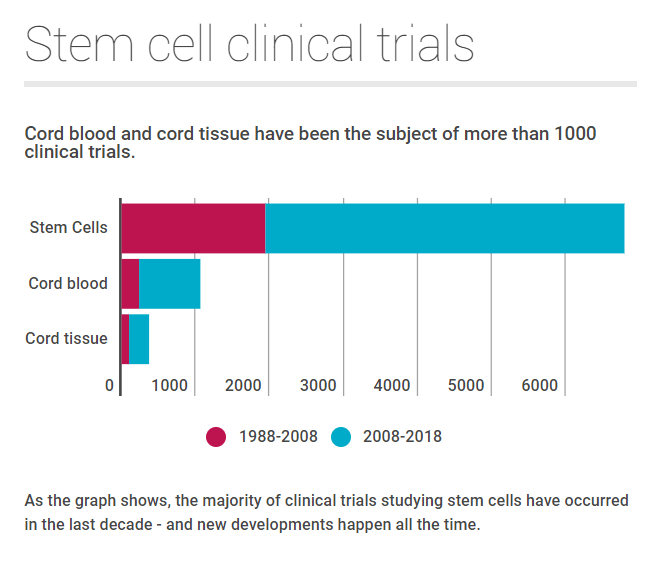More parents are choosing private cord blood banking than ever before, according to new statistics published by the BBC.
The numbers, which come from the Human Tissue Authority (HTA), show that there was an incredible 60% increase in cord blood collection and storage between 2014 and 2018.
The rise suggests that young families are increasingly recognising the benefits of their baby’s umbilical cord, which is one of the richest sources of stem cells they will ever have.
How many people bank their baby’s umbilical cord?
According to the new BBC statistics, 27,028 cord blood and tissue units were stored in 2018 – which is a massive jump from 2014, when 16,965 units were stored. Cord blood units also increased from 10,676 in 2014 to 15,078 in 2018.

The increase reflects the growing amount of treatments and advancements in stem cell science. For instance, in 2014, there were around 4,000 clinical trials and less than 80 approved cord blood treatments.
In 2018, that number had increased to 6,500 studies and 85 approved therapies. Now, there are 7,255 clinical studies.
How many people bank cord blood and cord tissue?
The report also reflects parents’ growing interest in storing cord tissue. In the four-year period, stored units doubled from 6,289 to 11,950.

As the graph above shows, more parents are also opting to store their baby’s cord tissue and it is easy to see why. There are now 391 cord tissue clinical trials, which is up from 271 studies in 2014.
Those studies are using cord tissue to treat all kinds of conditions – from osteoarthritis to multiple sclerosis, autism to asthma and spinal cord injury.
In their article, the BBC spoke with mother-of-three Rosaira Tormey, who has a mutation of the BRCA1 gene that is linked with a higher risk of breast cancer. She stored in the hope that umbilical cord banking could one day help her children fight diseases and disorders like cancer.
We just saw it as investment in their health. I’ve got no control over whether I’ve passed a faulty gene to them but I feel like I’ve got a little bit of control now if something was to happen. People save for their kids’ weddings and things like that, so why not put something in place if they ever need that protection?
How has the cord blood industry grown?
The potential of cord blood stem cells has rapidly increased since the first transplant in 1988. Between the 1980s and 2008, there were just 233 cord blood clinical trials; today, that number has almost quadrupled.
In the future, it is expected cord blood and tissue stem cells could treat some of today’s most serious conditions – including cerebral palsy, autism, stroke and diabetes.
You can keep up to date with these developments on our stem cell blog.
Request a Welcome Pack
Find out more about cord blood banking by downloading a Welcome Pack now.









